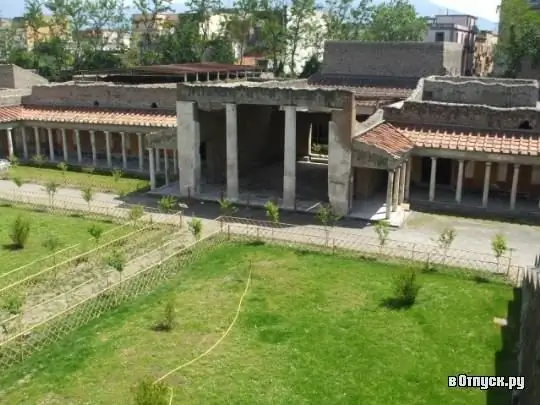
Description of the attraction
Villa Poppaea is an antique Roman villa located between Naples and Sorrento in the Campania region of Italy. It is also known as Villa Oplontis, and modern archaeologists simply call it Villa A. By itself, it is a huge structure on the site of the ancient city of Oplontis (modern Torre Annunziata). According to some historical documents, the owner of the villa was the emperor Nero, and his second wife, the infamous Poppaea Sabina, used it as her summer residence outside Rome.
It is known that Villa Poppea was the model for many houses of the ancient cities of Pompeii and Herculaneum, and its layout and decor suggest that it served as a place of rest and relaxation. Like other buildings in the area, the villa was rebuilt, possibly after an earthquake in 62 AD, and its oldest part, the atrium, dates back to the middle of the 1st century BC. During the renovation, it was expanded to the east - office premises, rooms for servants were added, a spacious garden was laid out and a large swimming pool was organized.
Thanks to the eruption of Vesuvius, many ancient houses, including Villa Poppea, have perfectly preserved frescoes, and today they amaze with their colors and shapes. Many of the villa's frescoes are in the so-called "second" and "third" Pompeian styles and date back to 90-25 BC. For example, in the caldarium you can see the image of Hercules in the Garden of the Hesperides (25 BC - 40 AD), and on the east wall of the main living room - images of theatrical masks and peacocks.
Villa Poppea was first discovered in the 18th century during the construction of the Sarno Canal, which ran through the central hall of the villa. Archaeological work was carried out here between 1839 and 1840, and some of the old frescoes were removed. At the same time, the territory of the garden was excavated. The study of the villa continued only in 1964-80s, in particular, during this period a huge pool with dimensions of 60x17 meters was discovered. And by 1993, the location of the villa's 13 gardens had been identified. The southern part of the villa is still hidden underground.
Next to Villa Poppea, there is another antique building - the Villa of Crassius Tertius, partially excavated in 1974-91. It is a simple two-story building with many rooms that were used as production and storage facilities. Over 400 amphorae were also found on the grounds of the villa, which suggests that there was a small factory for the production of wine, olive oil and other goods. And in one of the rooms there are the remains of 74 people who died during the eruption of Vesuvius, who buried the villa under a layer of ash.






